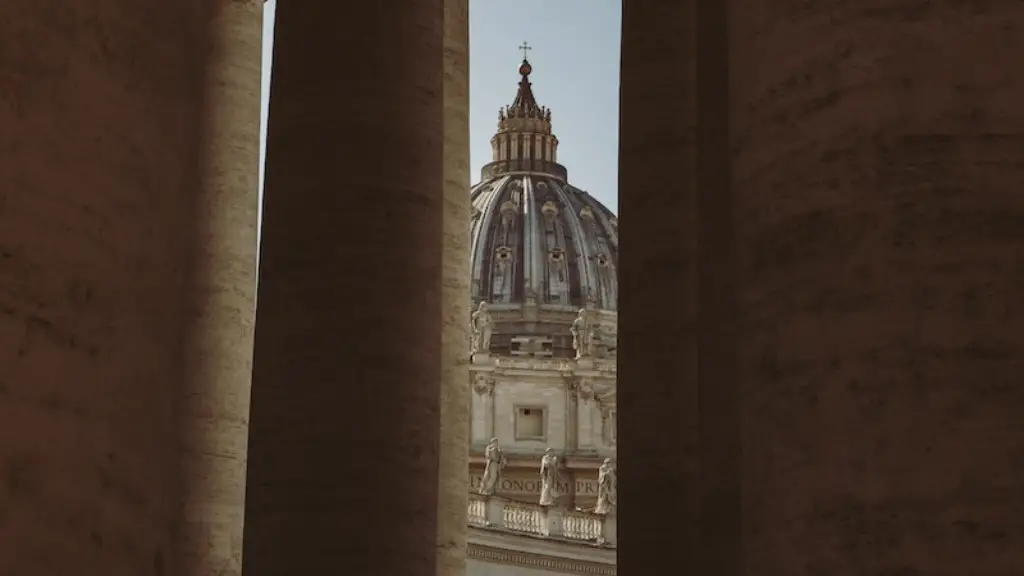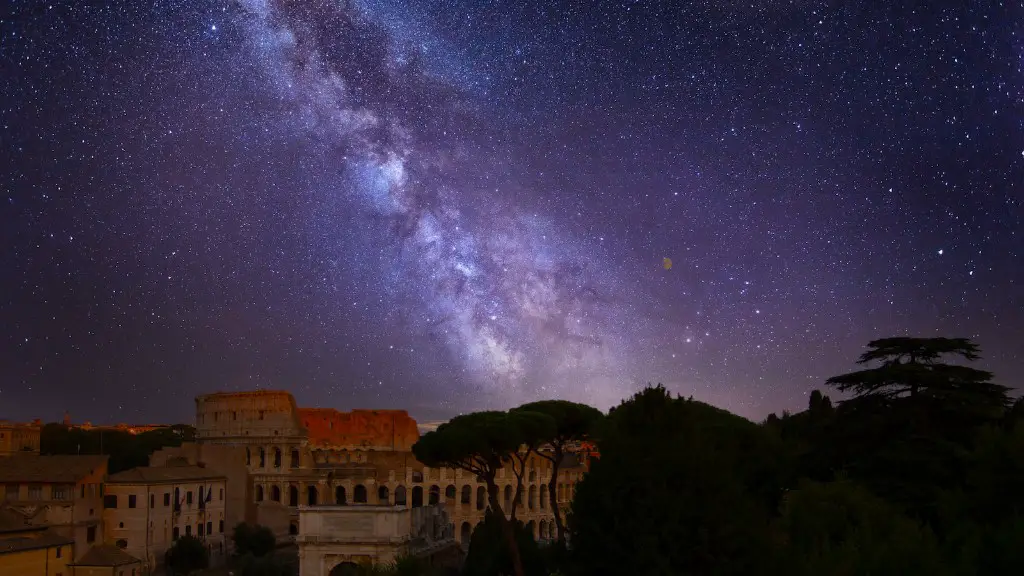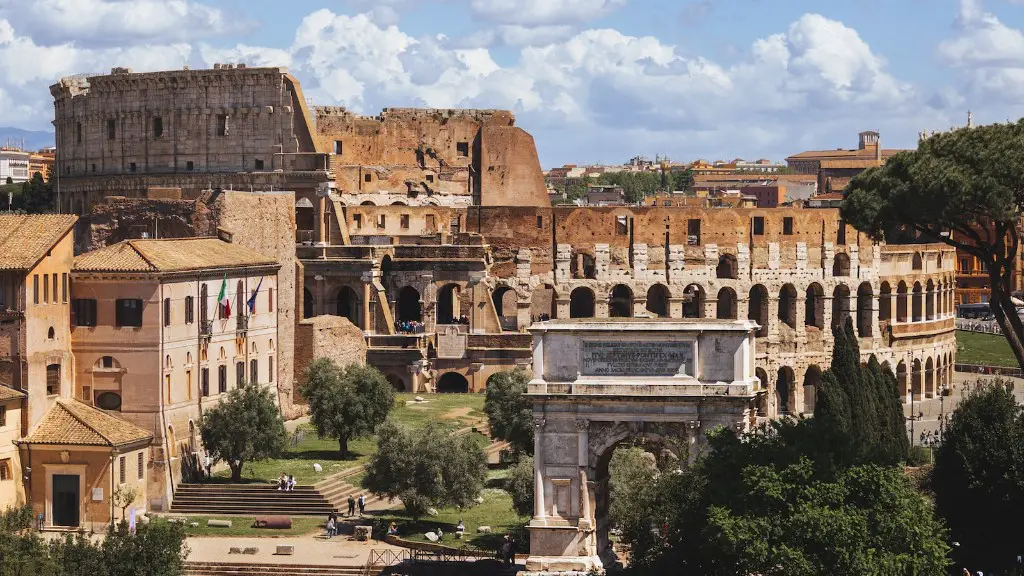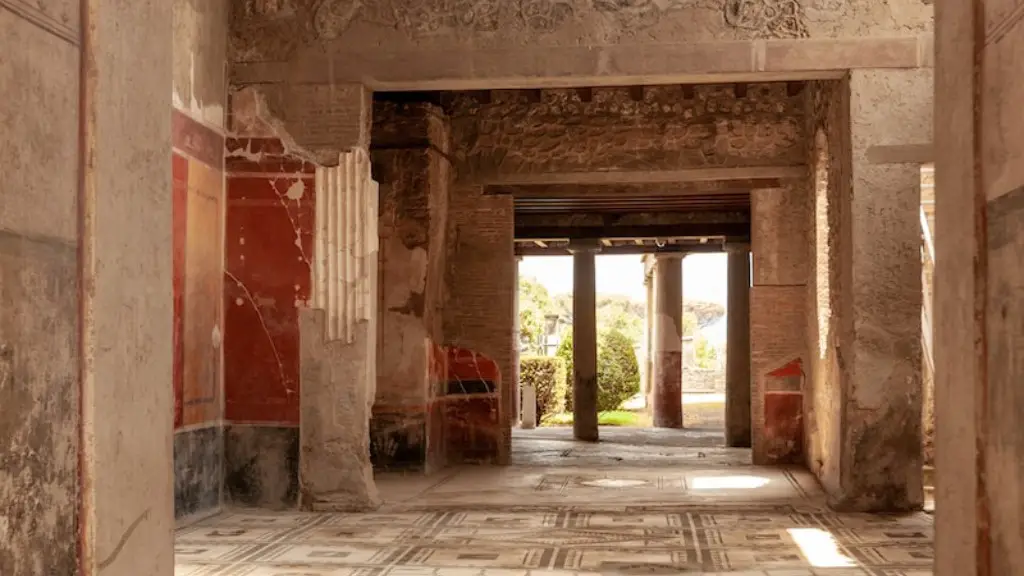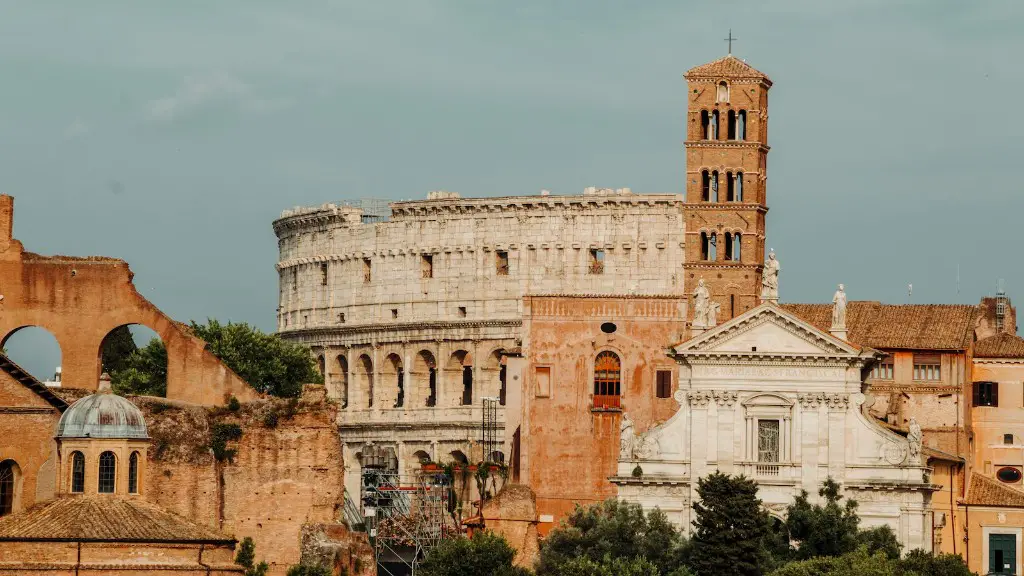Which religion did Ancient Rome follow?
The religion of Ancient Rome was based on ancestral, agricultural and legislative religion. The core components of the religion were the gods, their cults, and the temples dedicated to them, as well as the observance of certain traditions, such as festivals and rituals.
The gods of Ancient Rome had different roles and names. The main gods were Jupiter, Mars, Quirinus, and Vesta. Jupiter was the supreme ruler of the gods, the protector of Rome and of the Roman people. Mars was the god of war and a protector of Rome as well. Quirinus was the protector of the Roman people and their laws, and Vesta was the goddess of the hearth, home and family.
The religion of Ancient Rome was polytheistic, which means that they believed in multiple gods. Despite this, however, their religion was still very organized and structured in a way that was similar to that of other ancient cultures, like the Greeks. The religion was at its strongest during the period of the Roman Republic, when the gods were worshipped in public and had a significant role in the lives of the Roman people.
The worship of the gods was centered around sacrifices, particularly of animals and grains. Animal offerings were made to the gods, particularly to the gods of the underworld, and grain offerings were made to the gods of the earth in order to bring fertility. People also made offerings of oil, wine, and incense.
In addition to sacrificing to the gods, the people also held festivals and rituals to honor them. These festivals, called feriae, usually involved games, music, and dances to honor the gods. People also made prophecies and made offerings to the gods for guidance on important matters.
Although the religion of Ancient Rome was polytheistic, it was also highly organized with well-defined gods, rituals, and festivals. These beliefs provided the Roman people with a sense of stability and purpose. Although many of the gods were eventually replaced by Christianity, the religion of Ancient Rome was still an important part of the culture and played a large role in shaping the ancient world.
Precise Cult of Ancient Rome
The precise cult of Ancient Rome was described by the Roman writer Livy in his book “The History of Rome”. He described a twelve-day festival honoring the Twelve Great Gods. He described a seven day festival dedicated to Saturn, and a nine day festival dedicated to Mars.
In his book, Livy also described many other religious rituals and practices that were associated with the gods. For instance, the Vestals were required to keep a fire burning in the temple of Vesta at all times to honor the goddess. They had to perform certain rituals and make certain sacrifices to keep the fire burning. Other rituals included offering blood to the gods and sacrificing animals.
In addition to these practices, the gods in Ancient Rome were also connected to various aspects of life. For instance, they were associated with different agricultural cycles, such as the harvest or planting of crops. Jupiter, the supreme god, was also associated with justice and wisdom, while Janus was associated with doors and beginnings.
Not only did people in Ancient Rome follow specific rituals and ceremonies associated with the gods, but they also had specific customs for celebrating their festivals. For instance, the Saturnalia was celebrated by the people wearing masks and exchanging gifts. This was a symbol of the people’s respect for the gods and the importance of their influence to the people’s lives.
Sacred Animals of Ancient Rome
In addition to the gods and their rituals, there were also certain animals that were considered sacred to Ancient Rome. The most famous of these was the wolf, which was associated with Romulus and Remus, the legendary founders of Rome. The wolf was seen as a symbol of protection and strength.
The eagle was also seen as a powerful and sacred animal in Ancient Rome. It was associated with Jupiter and the gods of Jupiter, and was seen as a symbol of prosperity and victory. Similarly, the horse was associated with Mars and was seen as a symbol of power, courage, and speed.
In addition to these animals, the ox was also considered sacred and was seen as a symbol of strength, fertility, and abundance. The snake was another important animal in Ancient Rome; it was associated with Aesculapius, the god of health and healing, and was seen as a symbol of protection and healing. The bull was also seen as a powerful animal that was associated with many gods, such as Mars and Apollo.
Animals were also seen as a link between the gods and the people. They were often sacrificed to the gods in order to secure their favor. Animal sacrifice was a central part of Ancient Rome’s religion, and it was believed that by sacrificing an animal to the gods, the person making the sacrifice would receive favor from the gods.
Familial Deities of Ancient Rome
In addition to the gods associated with Rome, the people of Ancient Rome also held a special reverence for familial deities. These deities were believed to protect and guide families and act as their guardian angels. These deities were known as the Lares and Manes, and they were associated with the idea of ancestral spirits.
The Lares were believed to be protectors of the home, while the Manes were believed to be protectors of the deceased. The Lares were often depicted as small statues and placed in the home, while the Manes were honored by offering sacrifices and leaving offerings in cemeteries. People believed that, by honoring the Lares and Manes, the gods would come to their aid and protect their families.
The religion of Ancient Rome was highly organized and structured. The people believed in a pantheon of gods, each of which had important roles and functions in their society, and each of which was associated with particular aspects of life. The people of Ancient Rome also believed in familial and ancestral deities, which were believed to be protectors of their families and guides.
Recent Studies on Ancient Rome’s Religion
Modern scholarship and research on Ancient Rome’s religion has revealed much about its practices and beliefs. For instance, recent scholarship has determined that sacrifices were the central part of practices and rituals in Ancient Rome. Furthermore, it has been determined that sacrificial offerings were related to particular festivals, such as the Saturnalia, which was dedicated to Saturn. In addition, recent scholarship has revealed that the use of animal sacrifice was more widespread than previously thought.
In addition to these findings, contemporary research has also suggested that Ancient Rome had a complex cosmology. It has been suggested that the pantheon of gods was arranged in a hierarchy, with Jupiter at the top. Furthermore, research has indicated that Ancient Rome also had a religion of nature, involving fertility rituals, offerings to the gods, and reverence for various forms of nature, such as rivers and forests.
Modern research has also indicated that Ancient Roman religion was highly syncretic, meaning that it was influenced by beliefs and practices from other cultures. For instance, it has been suggested that Ancient Rome had adopted beliefs and practices from Greek, Egyptian, and Etruscan cultures. Furthermore, recent studies have shown that, although Christianity eventually became the dominant religion of the Roman Empire, it was only one of many religions practiced in Ancient Rome.
Conclusion
In conclusion, the religion of Ancient Rome was a highly organized and structured one, with a pantheon of gods, associated rituals and symbols, and familial and ancestral deities. Over the centuries, the people of Rome developed a complex and sophisticated religion that was connected to various aspects of their society and culture. Although Christianity eventually replaced the religion of Ancient Rome, its influence can still be seen in many aspects of modern society.
